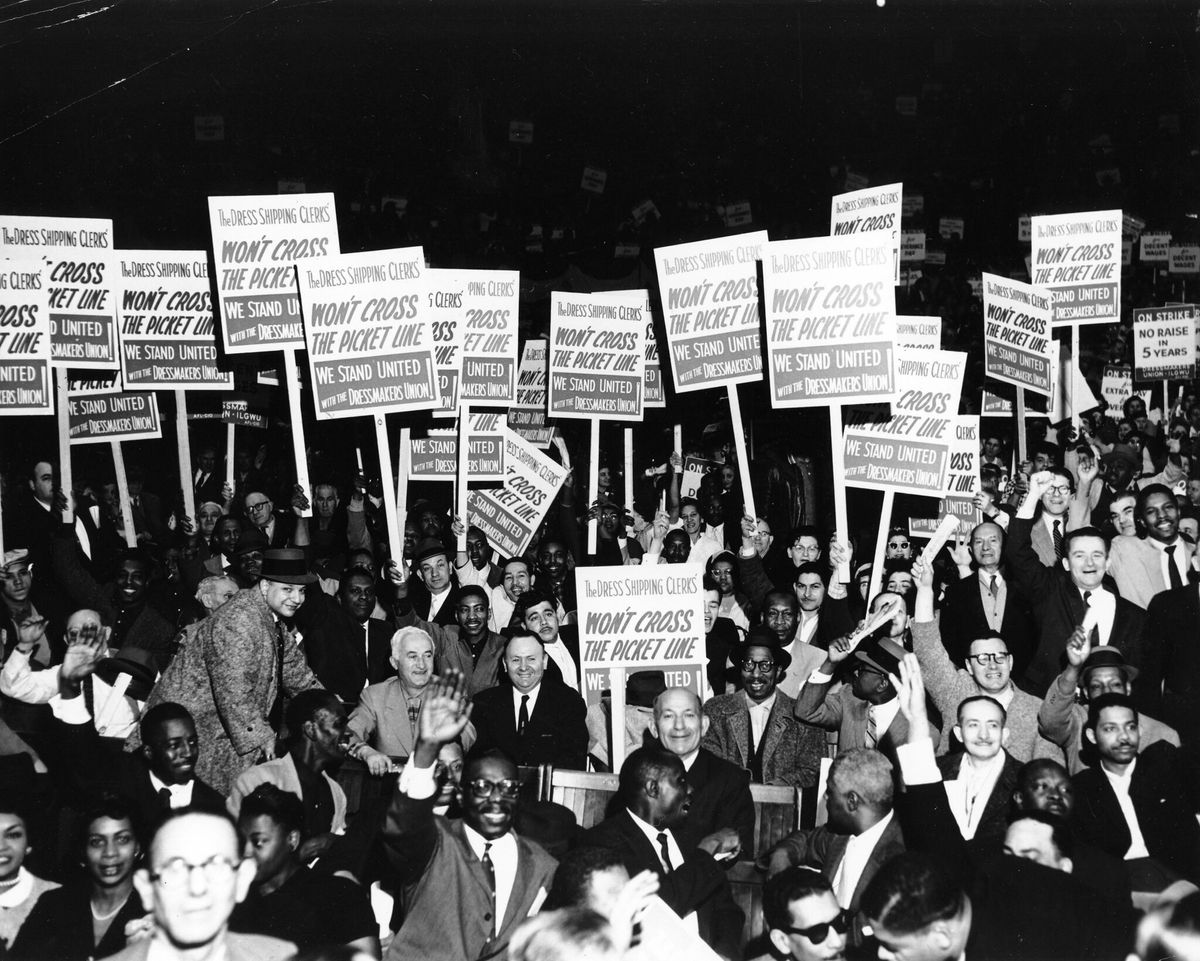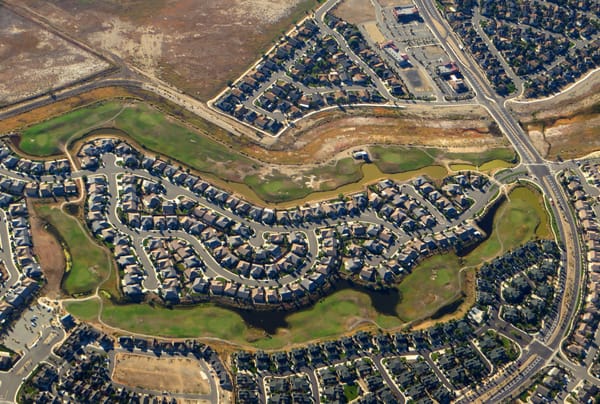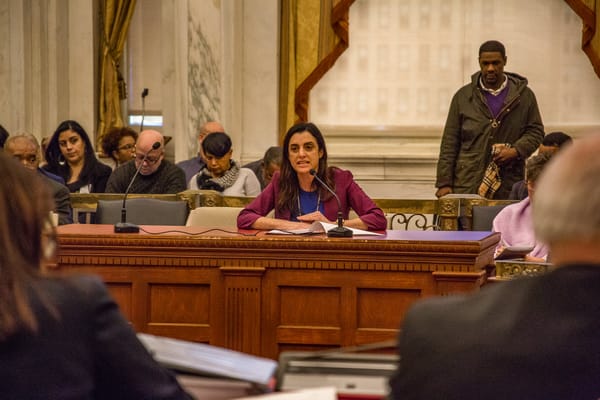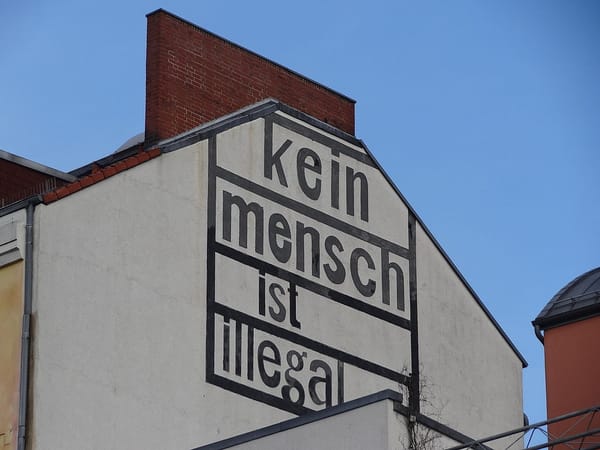From Plague to Renaissance: Notes on COVID-19 in the Workplace

Shaimeek Raijeen Frazier, 21, worked in food service and died last April after contracting the virus at work. Frazier was saving money to go to nursing school, according to The City’s “Missing Them” memorial.
“She was on her way when she got cut down. She didn’t deserve that. None of us did,” said her father Reginald Frazier.
Ruel Aldrington Forbes, 50, worked as a maintenance worker in New York City’s Housing Authority. He suffered from renal failure for 25 years but continued working despite his medical condition. He died of COVID last March.
Gabriella Hernandez, 57, worked as a family social worker. She died last April of COVID. Her co-workers and family remember her as “relentless in her advocacy for the children.”
During the Spanish flu pandemic from 1918 to 1919, 675,000 Americans perished, with the virus infecting one-third of the world’s population. Today, COVID-19 has killed more than half a million Americans and more than 3 million worldwide. At that magnitude, the numbers of the deceased become an unfathomable abstraction.
“In order to grieve over a cataclysm, we must personify it,” writes Mike Davis in The Monster Enters: COVID-19, Avian Flu and the Plagues of Capitalism. “The Final Solution, for example, has little gut impact until one reads The Diary of Anne Frank or sees the pitiful artifacts in the Holocaust Museum. Then it is possible to weep.”
Or as the French novelist Albert Camus wrote in The Plague: “A dead man has no substance unless one has actually seen him dead; a hundred million corpses broadcast through history are no more than a puff of smoke in the imagination.”
Beyond the existential need to give human form to a calamity, how do we wring meaning from such an incalculable loss?
No easy answers come to mind, but we can begin with the workplace, the site where COVID-19 sickened and killed hundreds of thousands of people, where the great laboring masses worked in hazardous conditions because poor and sick they had so little by way of a safety net to begin with.
No overall estimate exists on the number of people who have been infected on the job, or how many of those have died. “Without good surveillance data on the jobs of all workers with COVID-19, it’s hard to tell what groups are at higher risk because of their jobs,” says the federal Centers for Disease Control and Prevention (CDC). In October 2020, the CDC started recommending collecting data on occupation and workplace as part of risk-assessment interviews.
The states of Washington and California have industry-specific data. Nearly 50 percent of infections in Michigan can be traced back to the workplace. There are some academic studies and some sector-specific data.
The overall view is incomplete, but what cannot be denied is that even as Americans lauded the heroism of the frontline workers, the pandemic exposed more than ever American workers’ vulnerability. In the very industries on which everyone leaned on harder than ever—food processing, warehousing, shipping, retailing and grocery—soaring unemployment and weak labor laws left workers with little recourse when managers and employers failed to ensure their safety.
The statistics
More than 100,000 Americans who died from COVID-19, about 20 percent of the total deaths, were of working age, between 18 and 64 years old, and people of color. (That number doesn’t include Americans who work past retirement age to scrounge up a living.) The National Council for Occupational Safety and Health (COSH) has a database of publicly reported COVID-19 fatalities that lists over 1,000 workers. It is almost certainly a gross undercount.
“No public agency is systematically tracking all workers infected with COVID after exposure at work, or the number who have died from these infections,” says National COSH spokesperson Roger Kerson.
But the sector specific data we have can be quite shocking. A joint investigation by USA Today and the Midwest Center discovered in January that poultry plants reported less than half of 240 known deaths to the Occupational Safety and Health Administration (OSHA) during the pandemic. Another estimate from the Food & Environment Reporting Network puts the number of deaths of meatpacking workers at 383, with 89,680 testing positive for the virus. The law normally mandates that employers report a worker death to OSHA within eight hours, but during the pandemic, the agency weakened these requirements, USA Today said. Meatpacking plants became vectors for community spread, with rates of transmission exploding to 110 to 160 percent in communities with meatpacking industries.
“The meat and poultry industry, aided and abetted by the Trump Administration, failed to implement basic preventive measures, so outbreaks ripped through their plants and into the community,” says Deborah Berkowitz, worker safety and health program director at the National Employment Law Project (NELP).
“The Trump administration used the Defense Production Act not to make needed PPE, but to keep slaughterhouses open and force meatpackers to stay on a speeded-up line that forced workers to crowd together more, increasing infection risk,” says evolutionary biologist Robert Wallace whose book Big Farms Make Big Flu: Dispatches on Influenza, Agribusiness, and the Nature of Science analyzes the links between infectious disease outbreaks and agriculture dominated by multinational corporations.
Since 1970, as the journalist Timothy Noah highlighted last year, it has been illegal for any U.S. employer to expose their workers to “recognized hazards that are causing or are likely to cause death or serious physical harm.”
“The meatpackers took the [brunt] of the first rural waves,” Wallace adds. “They served as the doorway to the rest of their home counties. Some of the largest meatpacking plants are still serving as COVID incubators across state, meat type, and company: JBS, Hormel, Tyson, among others.”
During the pandemic, it has become even clearer than before how the economic interests of employers have superseded the laws on the books intended to protect workers from harm on the job.
Berkowitz cited a study published by the National Academy of Science last year, saying it found that “the outbreaks in meat and poultry plants alone during the first five months of the pandemic are associated with 236,000 to 310,000 COVID-19 cases (6 to 8% of total) and 4,300 to 5,200 deaths (3 to 4% of total) as of July 21 of last year.”
In March, Berkowitz testified before Congress and shared the gruesome numbers, hoping to spur federal action. Last year, the AFL-CIO advocated that the Labor Department should issue a legally enforceable emergency standard without consulting Congress, as permitted by the 1970 Occupational Safety and Health Act. Then-President Donald Trump refused to act.
Democratic presidential candidate Joe Biden promised swift action. But workers are still waiting. As The New Republic’s Timothy Noah explains, “the Labor Department is ready to go with two emergency standards—one for health care workers and another for everybody else—but the White House, fearful of setting off angry protests, is dithering.”
Roughly 158 grocery workers have died after contracting the virus, while at least 35,100 workers were infected, according to data from the United Food and Commercial Workers International Union. This month, the UFCW filed an OSHA complaint against Seaboard, a meatpacking plant in Oklahoma, for failing to report 99 percent of its COVID-19 outbreaks, not allowing workers to quarantine after exposure to the virus, and other safety violations.
The system
To truly confront what has come to pass, and to begin the hard work to prevent this tragedy from recurring, it is crucial to try and understand the systems that license cruel or incompetent political actors like Trump.
“It isn’t a matter of political persona, as utterly awful as the Trump administration was,” Wallace says. “It’s a more structural imposition dating back to the 1970s, when public health began to be neglected or monetized down to individual interventions.”
Even with Obamacare, Wallace points out, 28 million Americans lack any health insurance, and 44 million more are underinsured. These already dismal realities grow even more outrageous when taking into account that health care is tied to employment.
“In a classic example of Tudor Hart’s Inverse Care Law,” he explains, “whereby medical care is typically delivered to those who don’t need it most, those urban neighborhoods hosting the worst COVID death rates—routinely Black and Brown—are getting vaccinated at a much slower rate. We see it in New York, Chicago, and Minneapolis. Expropriation—to the very deaths of Black and Brown people—is enforced both in the neighborhoods and on the factory floor.”
American workers died in disproportionate numbers because they kept on working to feed, care, and educate the rest of the country amid deadly risks in a country with weak labor laws, if not the weakest labor laws, among members of the Organization for Economic Cooperation and Development. Those weak protections provided the necessary support for employers and managers willing to sacrifice vast swaths of working people for convenience and the bottom lines of a few.
Amazon, for example, grew dramatically as the pandemic lockdowns closed the nation’s brick-and-mortar stores. In April 2020, the company added 175,000 workers, as a surge in online shopping created a backlog of orders. Soon enough, workers protested unsafe working conditions at warehouses throughout the country, trying to compel the company to abide by public-health measures.
New York State Attorney General Letitia James filed a lawsuit against Amazon, charging that the company had failed to provide safety protection to its workers in two warehouses and retaliated against workers when they raised health and safety concerns.
In the United States, rampant illegal infractions against the collective-bargaining rights of workers are routine. These include employers surveilling and harassing workers and retaliating against them when they seek redress. But most union-busting tactics are completely legal.
In April, at Amazon’s facility in Bessemer, Alabama, the company fended off the largest union campaign it’s ever faced in the U.S. It held mandatory captive-audience meetings, where managers and union-busting consultants drilled workers with anti-union messages and a barrage of misinformation.
President Biden weighed in on the Amazon unionization campaign, saying in a video: “There should be no intimidation, no coercion, no threats, no anti-union propaganda. No supervisor should confront employees about their union preferences.”
Biden also came out in support of the Protecting the Right to Organize (PRO) Act. The legislation would be the most important labor-law change since the anti-union Taft-Hartley Act of 1947. It would repeal many aspects of that law, which banned secondary boycotts, allowed states to pass so-called right-to-work laws that allow workers to receive the benefits of union representation without paying for them, prevented foremen from unionizing, and purged union ranks of their most militant and dedicated leftist organizers. The PRO Act, like its predecessor the Employee Free Choice Act, has passed the House. If enacted into law, it would ban many of the standard union-busting tactics Amazon deployed, such as holding captive-audience meetings.
If the Amazon workers in Alabama had won, it would have represented the largest number of workers to certify a union through a National Labor Relations Board (NLRB) election in three decades. But they lost largely because U.S. labor law is skewed in favor of employers, and even those who break the law are rarely punished. Amazon may have illegally installed a mailbox at its Alabama facility, as the NLRB had forbidden it to do so. Mail-ballot elections are supposed to be anonymous and free of interference from an employer.
“Even though the NLRB definitively denied Amazon’s request for a drop box on the warehouse property, Amazon felt it was above the law and worked with the postal service anyway to install one,” Stuart Appelbaum, president of the Retail, Wholesale and Department Store Union, the union Amazon workers sought to join, said in a statement.
The company’s disregard for the rights of workers includes stealing their wages, with the Federal Trade Commission fining Amazon $61.7 million for wage theft, recouping the drivers’ stolen tips—but the commission did not impose a fine or other punishment. Amazon can get away with this behavior because union density, the share of workers belonging to a union, is at a historic low point in the U.S., at around 6 percent in the private sector and 10 percent overall.
“The complete evisceration of union density in this country means that the vast majority of private-sector workplaces have no organization representing employee interests which could speak up in opposition to the employer’s COVID-specific policies,” says Indiana labor lawyer Brandon Magner.
The discrepancies between workers represented by a union and those who are not were clear during the pandemic. Workers in unions had more favorable negotiating terms on questions of paid sick time, furloughs, workplace safety measures, and hazard pay, according to the Economic Policy Institute, a liberal think tank.
But a union on paper alone doesn’t guarantee these protections.
Christy Hoffman, general secretary of UNI Global Union, notes that workers in Europe are covered by collective bargaining agreements required as part of sectoral bargaining, which includes workers in certain industries and regions whether or not they are members of a labor union. Sectoral bargaining enables unions to set standards for whole industries through multi-employer contracts, instead of bargaining with individual employers.
Even with these safeguards, she says, European workers “had to flex their muscles to force Amazon to respect basic safety protections during the pandemic.” In Spain, Italy, and France, she adds, workers “were forced to either go to the government authorities or strike to win pandemic-related safety improvements.”
Labor-law reform furnishes better conditions for organizing, but it isn’t a substitute for building and exercising collective and democratic power in the workplace.
In February, the Food Chain Workers Alliance, a coalition of worker-based organizations from across the supply chain, released a report titled “We Are Not Disposable,” detailing the gruesome working conditions hundreds of thousands of workers face in industries essential for supplying food, from farms to meat-packing plants to warehouses and restaurants. Workers told harrowing stories of reporting to work sick, or contracting the virus on the job.
“We went on strike because the company didn’t care to give us basic protections, and kept exposing us to get sick or die,” said George, a worker at a poultry plant in Springdale, Arkansas who did not give his last name. “For weeks, we demanded that the company allow us to socially distance, by not ending the staggered-shift program to reduce the numbers of workers coming in contact with each other.”
Such actions are risky and require funding and organizational capacity. “Under the PRO Act, workers would be protected under the law for most spontaneous actions that may emerge under the pressures of a pandemic,” Magner, the labor lawyer, explains.
Race and class
The sectors that have been the most vulnerable during the pandemic disproportionately employ working-class people of color. The CDC notes that occupation was a key factor in creating disparities in the impact of COVID-19. In New York City, after journalists demanded breakdowns of the data, they found big disparities correlating with racially segregated neighborhoods.
“That’s how racial capitalism works, long before the outbreak,” Wallace says. “The poor wages and working conditions that force the poorest of workers into long commutes and overcrowded housing served as the proximate mechanism by which COVID ran wild in certain neighborhoods, including the South Bronx, Harlem, and parts of Brooklyn and Queens.”
“There’s another way of saying that—race and class war, at the level of health,” says Edgar Rivera Colón, a medical anthropologist who teaches courses on health justice and the history of race and medicine at the University of Southern California and Columbia University.
Undocumented workers—an estimated 69 percent of whom are frontline workers—have even fewer protections in the workplace, as they work under the threat of being reported and deported if they complain.
FWD.US, a non-partisan organization working on criminal justice and immigration reform, has found that undocumented workers are 4.6 percent of the overall U.S. workforce of 107.5 million essential workers, or 5.2 million people. These numbers are even higher in agriculture (11 percent), housing and facilities workers (9 percent) and food service and production workers (6 percent).
Undocumented workers were among the six workers killed and the twelve injured by the chemical leak accident in a Gainesville, Georgia, poultry plant in January.
Undocumented workers pay more than $48 billion each year in federal and state and local taxes, with $144 billion in after-tax spending power. Yet during the pandemic, they have been left to fend for themselves, ineligible for unemployment benefits or CARES Act stimulus checks. Take Maryland, where the state government in March passed a $1.2 billion relief package for its poorest residents but excluded undocumented workers, branding the idea of including them “far-left.” One exception is New York where the state budget adopted in early April included a $2.1 billion relief fund for excluded workers. The vote came after a 23-day hunger strike by essential workers.
That’s a laudable step to staunch an open wound. But we also need structural changes. Over a year into when the pandemic reached the crisis stage within America, new mutations of the virus are rapidly spreading across the country. We must reimagine new structural changes, beginning with labor law and the rights workers have in the workplace to collective action.
When the state fails, organized workers are their own salvation. Let’s give them the workplace protections to ensure they are empowered to create democratic workplaces where they have a fighting chase to check the ruthless and dictatorial exertions of power by employers over their lives.
The silver lining from the pandemic is that workers showed that they want better conditions and are willing to fight for them. Not even a global pandemic was able to entirely sap the power of workers to demand changes on the job.
May more workers be as resolute. May they be stirred into collective action to seize and realize their power as builders of democracy, catalyzing a renaissance of fighting unions across America.
Featured Image from the Kheel Center




